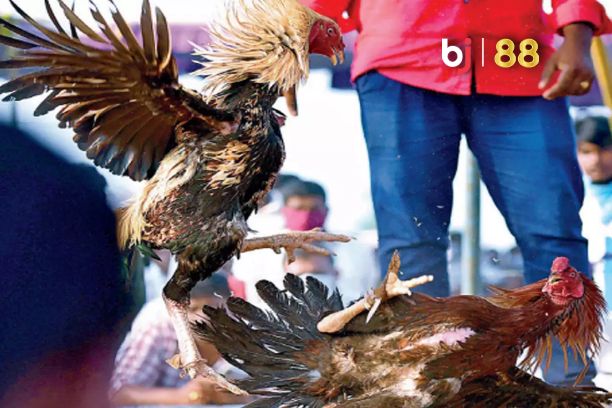Peruvian chickens are a kind of chicken that causes havoc in professional arenas, terrified opponents every time they meet. Because this is a battle chicken breed with a highly smart kicking skill and forceful, nasty strikes. Those of you who are interested in them should read the BJ|88 article below, where we will give all important information, including origin, characteristics, care and nurturing… Please consult!
Origin, characteristics that distinguish Peruvian chickens
Many intriguing facts about this highly “hot” breed of war chickens deserve your attention, including their origin and distinguishing qualities.
Origins of Peruvian Chickens
As the name says, this breed of chickens originated in Peru and are known locally as Gallo Navajero Peruano. According to documents, their forefathers fought chickens in France, Belgium, Spain, and the Oriental chickens. That is, Peruvian chickens are a blend of several different chicken breeds. Currently, people classify them into two fundamental types:
- Peruvian Navigators
- Peruvian Canete specializes in circular spurs.

There are very few purebred Peruvian chieftains. If they are inbred, the children may be predisposed to birth abnormalities and have significantly reduced strength. As a result, the name Peruvian chicken is not commonly used; depending on the breed of chicken used to combine, they will be known differently.
Features of Identifying Peruvian Chickens
This rare species of battle chicken is distinguished by its appearance, which is huge, strong, pedestal-like, and magnificent. Their health is likewise excellent; they have a high survival rate and are rarely ill. Some notable qualities of Peruvian chicken include:

- The chicken’s head is huge, with the most of it covered in leaves or strawberries. Chickens have dark eyes and a long, white beak. Beautiful mane hairs cover the entire head and neck. They have black feathers as their primary feathers from a young age. However, as it matures, it eventually transitions to green sticks or cashews.
- The body of the chicken is rather huge yet appears slender. The chicken hull weighs around 4-5kg and is rather lengthy when compared to the conventional techniques. The back of Peruvian chickens is slightly bent, and their high legs are separated into two distinct portions.
- This type of chicken has a long, thick tail that is slightly rainbow-colored. They feature eight plate tail stalks and three flag tail stalks piled on top of one another.

Evaluate the abilities and kick technique of Peruvian chickens.
Many people believe that war chickens are sluggish because of their huge, muscular bodies. However, the truth is completely different; Peruvian chickens move quickly, escape punches, and sustain strikes with surprising ease. This breed’s remarkable kicking skill is characterized by tremendous hops and the ability to soar and strike from above. Their endurance is also pretty excellent; after graduating from school, they rarely require medicine.

The kicking abilities of this foreign breed of chickens are highly valued. They have several fox blows, strong hits, and may shock opponents or even kill them on the floor. Peruvian war chickens are frequently employed to kick round spurs and knife spurs, increasing their threat level considerably. That is why monks seek out this kind of combat hens, which frequently appear in professional venues.
What is the price of Peruvian chickens for sale?
Peruvian chickens are widely bred in Vietnam, and you can readily locate them on forums dedicated to growing stone chickens and decorative chickens. As a result, their selling price is relatively reasonable, at around 700,000 VND per 1kg4 or more. To select the highest quality techniques, you should focus on purchasing from reliable addresses. Purebred Peruvian chickens are exceedingly rare, so be wary of places who offer them. Most chickens available in Vietnam are bred exclusively.

According to specialists who specialize in this line of birds, millet should select Peruvian chicks mated with American chickens, jungle chickens, Shamo chickens, Asil chickens, and so on. Because these lines frequently yield the highest grade tactics, the kicking force is quite powerful.
Instructions for appropriate and effective care of Peruvian chickens
Although they are foreign chickens, they are not as tough to keep as many people believe, and in fact, they are rather easy to raise. Peruvian chickens have very excellent resilience and seldom get sick, thus their survival rate is very high. However, while raising them, it is important to invest in the farming area; free-range farming is more effective than barn raising. Allowing hens to roam freely in search of food can help them become stronger, train, and improve their muscles.
When chickens reach adulthood, they may compete in contests, and the brothers allow them to do further training activities such as chicken rhyming, rhyme, cage running, flying cage, leaping cage, and so on to efficiently boost endurance and health levels.

Peruvian chickens have similar nutrition as Vietnamese broilers. If you decide to keep hens outside, continue to the prior diet. If you alter something, do it gradually so that the chicken can adjust; preventing complete change may lead the chicken to stop eating, fail, spill, and deteriorate, which is extremely unpleasant.
To prevent germs from collecting and harming animal health, chicken farms must be kept clean and cleaned on a regular basis. In addition, provide vitamins B1, B12, and vaccinate hens from the start to reduce infectious disorders.
Final judgments
The above clip demonstrates that Peruvian chickens are powerful fighters in the ring. Once in battle, they play incredibly aggressively, have no idea what running is, and their assaults are highly bloody, overpowering all opponents. If someone is concerned about them, they can confidently choose and teach them to be invincible warriors in the future.



